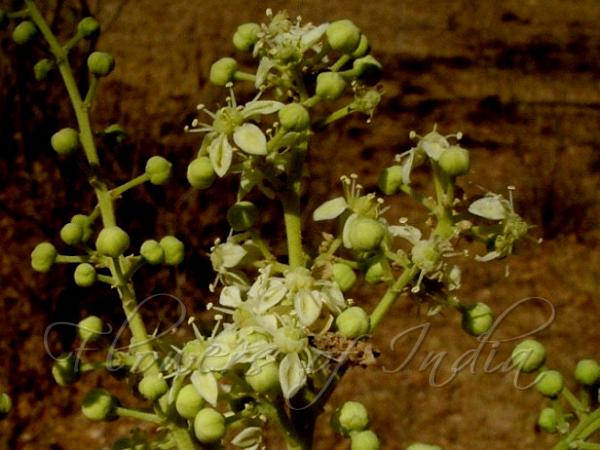|
| Ceylon Satinwood |
|

|

| File size | 112184 |
| Original date | 3/2/09 11:03 AM |
| Resolution | 616 x 462 |
| Flash | Flash did not fire |
| Focal length | 6.3mm |
| Exposure time | 1/1000s |
| Aperture | 8.0 |
| Focus Distance | |
| Metering Mode | Spot |
| Camera make | SONY |
| Camera model | DSC-P52 |
| Sensor type |
|
|
|
|
Photo: |
Botanical name: Chloroxylon swietenia Family: Rutaceae (Lemon family)
Synonyms: Swietenia chloroxylon
Synonyms: Swietenia chloroxylon
Ceylon Satinwood is a hardwood tree, native to south India and Sri Lanka.
Ceylon Satinwood is a medium-sized deciduous tree, growing to 15-20 m
tall, with thick, fissured, slightly corky bark. Alternately arranged
leaves are 15-22 cm long, pinnately divided into 10-20 pairs of oblong,
blunt leaflets. The flowers are small, creamy-white, produced in panicles
10-20 cm long. Buds are round. The fruit is an oblong three-segmented
capsule 2.5-4.5 cm long, containing 1-4 seeds in each segment. The wood
produced by the tree is often a golden colour with a reflective sheen. It
is used for small luxury items and as a veneer in wooden furniture. It is
one of the best-known satinwoods.
Medicinal uses: Ceylon Satinwood is used in folk medicine in
Chhattisgarh. In case of a problematic wound, the dried leaves of
Ceylon Satinwood are applied on wound in order to increase the healing process.
Ceylon Satinwood is used in folk medicine in
Chhattisgarh. In case of a problematic wound, the dried leaves of
Ceylon Satinwood are applied on wound in order to increase the healing process.
Medicinal uses:
 Ceylon Satinwood is used in folk medicine in
Chhattisgarh. In case of a problematic wound, the dried leaves of
Ceylon Satinwood are applied on wound in order to increase the healing process.
Ceylon Satinwood is used in folk medicine in
Chhattisgarh. In case of a problematic wound, the dried leaves of
Ceylon Satinwood are applied on wound in order to increase the healing process. | Identification credit: Prashant Awale | Photographed in Pench, Madhya Pradesh. |
• Is this flower misidentified? If yes,